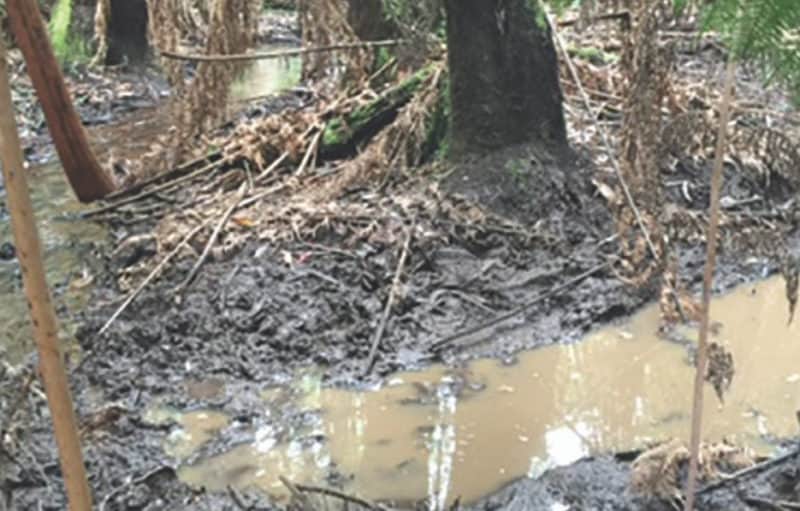PARK WATCH March 2019 |
Victoria is looking towards a new integrated way of managing our marine environment that involves cross-sector collaboration, explains VNPA Nature Conservation Campaigner Shannon Hurley.
Victoria is lucky to have custodianship of the 10,000 square kilometres of marine waters which surround our coastline, and sustain many Victorians way of life.
Also calling this environment home are an incredibly diverse and unique amount of species – 12,000 (that we know of) – many which are found nowhere else on earth.
With this comes a huge responsibility to manage such a precious resource sustainably, not only for it to survive, but to thrive.
VNPA has long pushed for improved management of our coasts and marine environment. In the lead up to the 2014 state election the Labor Party promised to do just that. In August 2018, Victoria passed a key milestone, a new bill called the Marine and Coastal Act 2018, which is critical for guiding improved management arrangements for our coasts and marine environments going forward.
Whilst there were significant shortfalls in the new Act, such as cutting the role of the Victorian Coastal Council and abolishing regional coastal boards (see page 18, March 2018 Park Watch), there are positives, one of which is an overarching statewide marine and coastal policy.
A significant feature of the marine and coastal policy is the development of a marine spatial planning framework that establishes a process for achieving integrated and coordinated planning and management of the marine environment – a first for Victoria as a whole. In simple terms, it could be similar to a land use planning scheme, with zones for particular uses, but on a much larger scale for the protection of our largest publicly-owned space in Victoria – our marine environment.
With more pressure from a growing population and increased use of our marine environment across both industry and recreation, as well as climate change, the sustainable management of our marine environment is becoming much harder to achieve. Marine spatial planning should be a critical process to allow for collectively better decision-making on the cross-sector management, use and protection of our big blue backyard – so that we don’t love it to death, or overexploit it and fall into the tragedy of the commons.
There are many different interests at stake when it comes to our coastal and marine environment; whether it’s industry (ports, fisheries, tourism, energy production), recreational (boating, fishing, scuba diving), conservation (biodiversity protection, research), or the Indigenous community. Currently these are variously managed, but often decisions are made in isolated sector ‘silos’.
A new marine spatial planning framework will ideally provide overarching guidance for ministers and managers to integrate decision-making and management across sectors, and we hope it will have a clear vision to use it sustainably. But the success of this vision will need buy-in from all sectors, and to be followed up with clear, coordinated actions for implementation. These should not be watered down, and should stand for a healthy marine environment and foster strong leadership and stewardship of our precious undersea and coastal life.
This process has already been undertaken in other places around the world. The first was Germany in 2009, with a key driver being the need for wind energy extraction; then China in 2015, driven by decreasing health in the marine environment; and New Zealand in 2017, in the most heavily contested and degraded area near Auckland.
The new Marine and Coastal Council (an outcome of the new Act) is the lead to guide the process, with the Department of Environment Land Water and Planning (DELWP) being the lead to develop it, and co-endorsed by relevant portfolio’s ministers.
VNPA attended the first workshop in January this year, and the outlook appears positive. But it will need continued fostering and priority within government, all interest groups and the community if we are to get it right.
We will continue to be involved in shaping the first steps of the marine spatial planning process, a co-designed framework developed together with all marine stakeholders, across three workshop days. This framework will be the basis for deciding when, where, and how a marine spatial plan will be implemented. The expected timeline is for the framework to be out for public consultation mid-2019, and finalised by December 2019.
There will be many challenges – having a framework all sectors can accept, getting the governance right to deal with varied legislation, bringing groups together that have a history of conflict, and the expanse of and varied uses given the size of our coastline.
If we do get it right, the benefits could far outweigh the challenges – a shared awareness of the threats and ability to take an ecosystem-approach response; the opportunity to think and act proactively rather than responding to risks when it is too late; shared responsibility and stewardship for working together to ensure sustainability for the future.
The ability to make informed evidence-based decisions for planning and management means there is much to be gained as users of the marine environment, but also much to give back. If other countries efforts are anything to go by, it is within reach. It is a must if we are going to give our big blue backyard the chance to continue to sustain our needs, and ensure it survives and thrives as a healthy marine environment into the future.
Did you like reading this article? Want to be kept up to date about this and other nature issues in Victoria? Subscribe to our email updates.
You can also receive our print magazine Park Watch four times a year by becoming a member. Find out more here.
